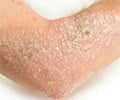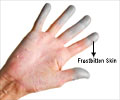Causes / Risk Factors
The exact causes of scleroderma are not clear but it has been understood that the disease is brought about by inherent genetic factors that are set off by environmental triggers.
- Autoimmunity – The affected person’s body develops antibodies against self. Collagen is a protein that makes up the connective tissues. In a person with scleroderma, T helper cells attack the collagen lining the tissues believing it to be a foreign entity. This is the basis of the auto - immune response and it is believed that factors such as toxic chemicals, radiation or viruses could trigger this response in an individual.
- Microchimerism – A process known as microchimerism has been put forth as one of the reasons for scleroderma. Chimerism is a word that refers to a phenomenon whereby two different cell types, mostly from two different individuals exists in the body of the same person. When the number of foreign cells are low, the condition is known as microchimerism. Scleroderma’s symptoms resembles those of graft-versus-host disease (GVHD) which occur in bone marrow transplant patients; besides, the disease has a higher incidence in women. This led to the theory that cells from a fetus left in its mother's body after she gave birth resulted in micro-chimerism and could be the reason behind the disease in some women. However, this theory is not conclusive and may apply for a small subset of patients.
- Age, gender and familial predisposition are among the risk factors of scleroderma.











